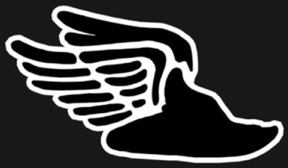Races starting at Ayala Center Cebu and SM City Cebu frequently take the route passing thru JY Square Mall to Jones Avenue and Back. That's one of the toughest route to run in Cebu since the course is uphill at the first and 3rd quarter of the race. Also, races in Mandaue City and Lapu-Lapu City usually include either the Marcelo-Fernan Bridge or the Newly opened Cansaga Bay Bridge and is also an uphill-downhill course.
Running elevations is not the same as running in flat courses. Energy expenditure is higher since our thigh muscles have to consume more energy while running uphill and it has to prevent us from falling when running downhill. Our legs tire earlier compared to our training runs in Abellance Sports Complex. This is not always the case.
ChiRunning figured ways to ease our run with elevations. Aimed to minimize energy expenditure, prevent injury and improve your running form, ChiRunning helped me improve my runs. I learned its techniques during the ChiRunning Clinic held at Waterfront Lahug last March and was conducted by a renowned ChiRunning Instructor, Lit Onrubia. He taught a small group of runners on the efficiency and benefits of ChiRunning.
I have constantly shared the things I learned during the clinic to friends whom I trained or helped improve their runs. I hope my ChiRunning Instructor don't mind me sharing this with all Cebuanos for FREE.
RUNNING FORM (FLAT COURSE)
1. Slight Lean Forward
2. Arms flexed at the side with normal swing forward and back
3. Shoulders and hands relaxed
4. Core muscles engaged
5. Normal relaxed stride length (DO NOT OVERSTRIDE)
6. Cadence at approximately 88 steps/min
RUNNING UPHILL
1. Increase Lean forward to more than usual
2. Arm swing more to the front than back
3. Shorten Stride length
4. Increase Cadence
5. Shoulders and hands relaxed
6. Core muscles engaged
RUNNING DOWNHILL
1. Slight Lean Forward (Same as FLAT COURSE)
2. Arms normal swing forward and back but faster to compensate for faster cadence (Same as FLAT COURSE)
3. Shoulders and hands relaxed
4. Core muscles engaged
5. Normal relaxed stride length (DO NOT OVERSTRIDE)
6. Increase Cadence (to prevent falling)
If properly executed, these ChiRunning techniques will be able to help you conserve energy during runs and will reduce the risk for pain or injury. Proper Training is the Key. Efficient and Pain-free Running is our Goal.





















No comments:
Post a Comment